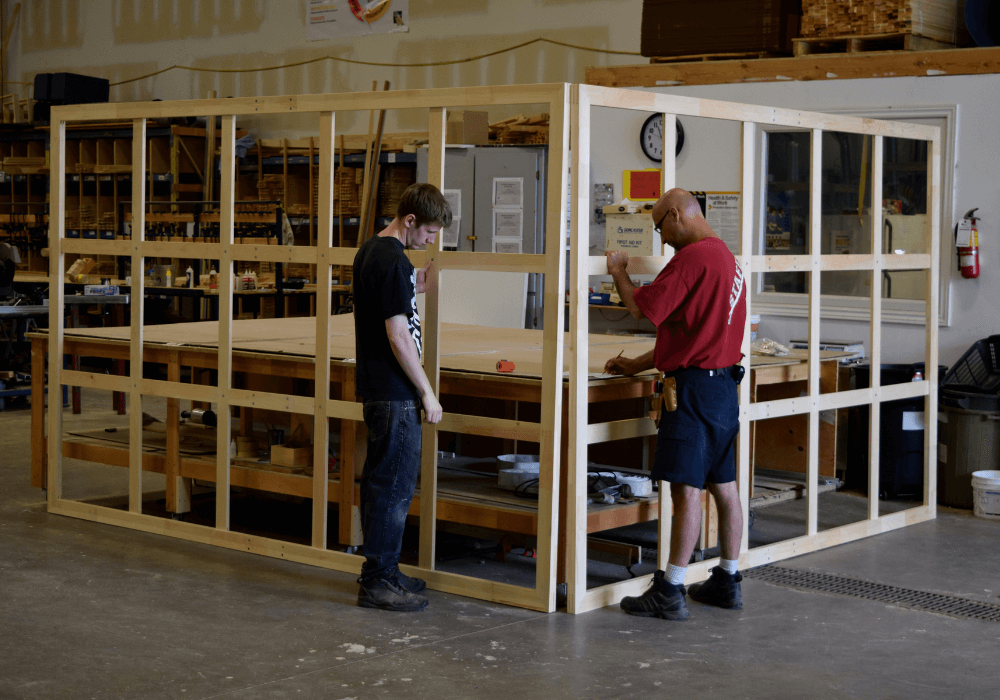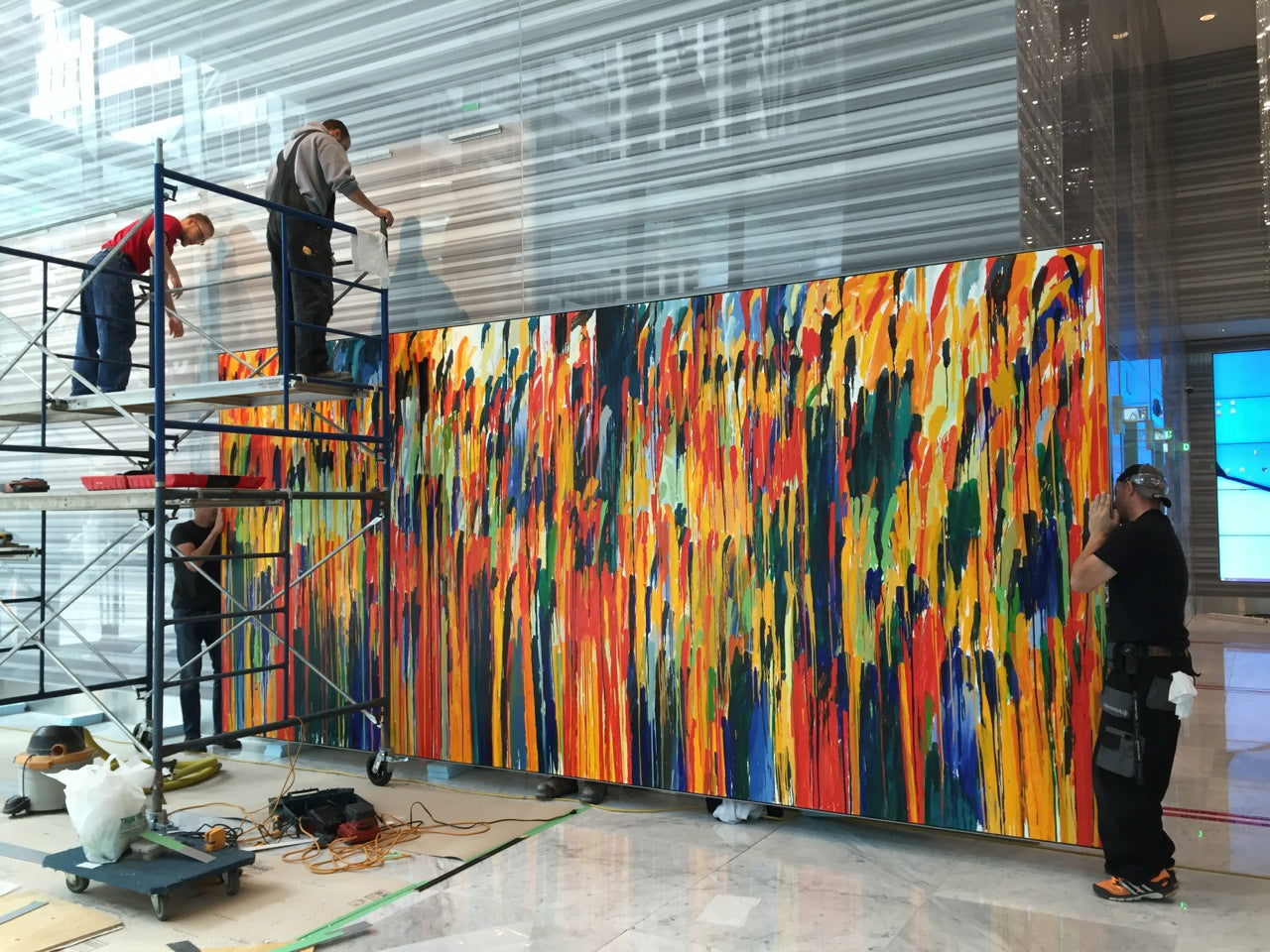How to Buy a Canvas Online - What do you need for your project?
What canvas or stretcher frame do you need for your project?
You might think choosing a canvas is as simple as knowing the size you want but there are actually a lot of different factors that go into selecting the right canvas or stretcher frame for a particular purpose. You can narrow it down initially by looking at what you want to stretch:
What Do You Want To Stretch?
(1) An Existing Painting or Print on Canvas
A canvas that is already painted or printed is pretty simple from a stretching perspective but it presents its own set of considerations for sizing and treatment which we detail in the article, “How to Stretch a Canvas Painting or Prints on Canvas”. A professional conservator who is working with a valuable or antique painting would have additional issues that they would address but this article covers the basics for most people.
(2) Blank Canvas
If you are an artist, you are more likely to be wanting a blank canvas so the question then is whether to start with pre-primed or raw, unprimed canvas and to choose either cotton or linen.
(a) Stretching Pre-Primed Canvas
Pre-primed canvas is easy to work with because it gives you a fully-prepared, smooth and even surface without any hassle. Primed cotton canvas is inexpensive yet high quality and generally offers a universal base that is suitable for any type of paint or mixed media (available through UCS in light [7 oz] and heavy [#12] weights). Primed linen is the traditional choice for greatest longevity and is available with either universal primer or an oil base which is specific to oil or alkyd paint.
DID YOU KNOW? All cotton duck canvases are referred to as either numbered/double fill (#) or single fill (oz). Numbered cotton canvas uses double spun thread for the weft threads when it is woven, resulting in a tighter and stronger material. This also means that the canvas is stiffer and less permeable to liquids (paint, ink, etc). With numbered cotton canvases, higher numbers actually refer to a lighter weight and, therefore, a finer texture than lower numbers. Numbered canvas ranges from #13 through #1, with the heaviest versions often used for more rugged outdoor and industrial applications. Upper Canada Stretchers offers #13 (portrait texture, medium weight), #12 (heavy weight) and #10 (extra heavy weight) unprimed cotton canvas and 7oz (light weight) or #12 primed cotton canvas.
(b) Stretching Unprimed Cotton/Linen Canvas
Unprimed cotton or linen gives you the greatest degree of control over your canvas surface but also presents the most factors to consider. Some of these factors include:
What Size Will The Canvas Be?
The size of the canvas is, of course, a major consideration in the type of stretcher frame that you should use for your project but it is heavily influenced by what you are stretching on it. Raw cotton and linen canvas shrink when they get wet (such as when you are priming or painting it). That shrinkage puts a great deal of force on the stretcher bars so larger canvases that will be primed and painted will need to be far more sturdy than those that will be stretched with a pre-painted or pre-primed canvas.
With ten different stretcher bar profiles and endless custom variations, Upper Canada Stretchers has many options to meet the needs of any project ranging in size from 6 inches to 30 feet or more! The article, “How to Choose the Right Stretcher Bars” includes a chart that gives our recommendations for which stretcher bar profiles and bracing to use for different size requirements.
How Will You Be Sizing/Priming Raw Cotton/Linen Canvas?
Cotton and linen are both natural fibers and are very absorbent so the raw surface must be prepared before painting to prevent wasting a lot of expensive paint. The products most commonly used for this purpose are Rabbit Skin Glue, PVA sizing or Acrylic Gesso Primer.
Rabbit Skin Glue is the traditional approach for sizing, using refined rabbit collagen to tighten the fabric and seal it for painting. It does an excellent job, however it can only be used under oil paint (acrylics will flake off when dry) and, when used on raw linen, it causes the greatest degree of shrinkage, exerting an exceptional amount of force on the stretcher bars. This combination requires the most consideration and may necessitate more or heavier bracing and/or a heavier-duty stretcher frame. Keep in mind that Rabbit Skin Glue is hygroscopic (absorbs moisture from the air) and will reactivate anytime that the linen becomes wet or moist, meaning shrinkage will continue to be a factor for the entire lifetime of the painting.
A more animal-friendly alternative to Rabbit Skin Glue is PVC Sizing, which works well under both acrylic and oil paints and also does not produce as much shrinkage on linen or cotton canvas. Extra large stretcher frames should still be structured to accommodate this tension, however. Acrylic Gesso Primer can also be used to size and prime in one product, giving the bright white surface that most artists expect as a starting point.
Will The Canvas Texture Affect Your Finished Artwork?
The texture of the canvas may affect your selection; for example, if you desire a smoother surface to showcase the fine details of a portrait. Heavier weight canvas typically provides a more textured surface than a lighter weight one, although layers of primer applied with a light sanding in between helps to smooth out the surface. The options offered by UCS include raw linen in “fine portrait” and “medium" textures, as well as raw and pre-primed cotton duck canvases in 7 oz (light weight), #13 (portrait texture, medium weight), #12 (heavy weight), and #10 (extra heavy weight).








